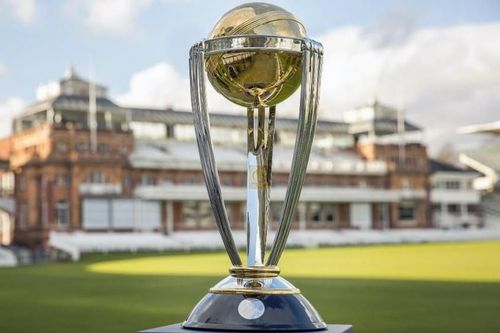
What the numbers show about India’s World Cup squad

A settled team that wins away from home
India are among the favourites the win the 2019 World Cup. This is owing to some strong performances over the past two or three years, but particularly in 2018/19. During this period, the team has notched up some memorable series wins away from home in South Africa (5-1), Australia (2-1) and New Zealand (4-1). India’s credentials weren't hurt by winning the Asia Cup in clinical fashion.
India are a team that look settled and have a powerful core of players. However, some concerns about balance and combination remain. The breakdown of the team and the considerations are as follows.
India’s batting reliant on top 3

India’s top three, Shikhar Dhawan, Rohit Sharma and Virat Kohli form the best top order in white ball cricket right now. They have been in scintillating form over the last year, each of them scoring over 1,000 runs.
That Rohit and Dhawan complement one another with their styles is a known fact. They score at roughly the same strike-rate, 96, and both score about 60% of their runs in boundaries. Dhawan usually starts fast, scoring early boundaries and quickly
putting the bowlers under pressure. Rohit is usually a sedate starter, taking time to get his eye in before opening up.
Interestingly, their boundary counts highlight the difference in their batting styles. Dhawan has scored 148 fours and 12 sixes, while Rohit has 128 fours and 51 sixes. Typically, Rohit gets into top gear once he crosses 60-70 runs and then is willing to be more aggressive. Once he crosses 100, it is almost impossible to stop him from scoring.
The platform set by Rohit and Dhawan at the top will be a key factor in determining India’s fortunes and both are definite starters.
Even if the opposition manages to knock over one of the openers for cheap, in walks arguably the best modern-day batsman. Virat Kohli rarely takes chances and is very calculating in the way he goes about his batting. Kohli times his moves, in terms of picking the bowler and the moment to attack, to perfection. Incredibly, Kohli has a strike-rate of 98 in the last year with only 45% of his runs coming in boundaries. These metrics highlight how quick and efficient he has been in running between the wickets.
India still searching for answers in the middle order

The middle-order remains a concern and none of the players in consideration have numbers that make a strong case for assured spots. Ambati Rayadu has done a decent job, but his comparatively low strike-rate and higher balls per boundary cast doubts on his credentials at No 4. If India find themselves two wickets down in 10 overs, Rayadu would come in handy.
However, given the form of the top three, he is likely to walk in at 150-plus on board and within the 30th over. In situations such as this, his ability to strike the ball is suspect and India would be better off opting for someone who can keep the momentum going.
Lately MS Dhoni’s waning ball-striking skills have got him much flak. He can no longer go big as soon as he walks in. Nevertheless, he remains a dependable anchor around whom the batting order can flourish. His runs per innings is comparable to Rayadu and Dhoni would benefit from coming in at No 4. This would allow him to bat freely and build his innings before launching the final assault in the death overs.
That said, certain intangible attributes of his make Dhoni an invaluable member of this side. His presence allows Kohli to be used in the best manner possible on the field, even if it's on the boundary rider. He effectively takes over the captaincy, especially when the spinners are bowling. His glove work is also beyond compare.
In this context, there is a case to be made for Rishabh Pant to come in at No 5. His attacking Test 100s and IPL exploits make this an interesting gamble. At the Under-19 level, Pant scores a boundary every 5.5 balls and close to 73% of his runs come in boundaries. He has not been given much of a run in ODI cricket and Australia's visit to India before the World Cup could be his opportunity to state his case. Pant could be the x-factor that allows India to pile on the pressure.
Leaving Dinesh Karthik at home appears to a bit harsh given his finishing ability. However, taking the balance of the squad into account, his exclusion makes sense. His numbers in 2018/19 do not paint a flattering picture. His strike rate is a meagre 79 and his runs per innings is at 24. Further, he strikes a boundary on average every 13 balls.
The all-rounders are plenty, but who to choose?

The all-rounders available in the squad offer India a variety of skill-sets and options. The likely scenario is that two of them will play.
Kedar Jadhav has been a useful lower middle-order batsman and his numbers clearly reflect superior performance batting at the crucial No 6 position. His strike rate is over a 100, and scores a boundary every 8.6 balls on average. His slingy, round-arm trajectory makes him a tricky prospect to face as well.
In addition, Hardik Pandya’s return to form against New Zealand was promising. He bowled with control and purpose. However, his batting numbers do not do justice to his potential. He has consistently been underwhelming with the bat the last year. If he can find form, Hardik will be a crucial member of the side.
Ravindra Jadeja is a conundrum. However, given the performances of the spinners, he is unlikely to start. He will nevertheless be a useful option to consider on pitches that offer some assistance to fast bowlers. He can be played as the second spinner to bring Mohammed Shami in as the third pacer. He is also a great fielder and can save an extra 10 runs.
The bowling line-up is lethal and settled

Jasprit Bumrah has become the leader of this attack over the past couple of years. He is probably the best bowler across formats in world cricket right now and apart from Kohli is the only player in the current squad that plays all three formats.
His stellar numbers show that he is operating at a different level. Owing to his increased workload, the team management has played him in only 12 games in the last year. In this period, he has taken wickets at an average of 14.76 at an economy of 3.41. These are great numbers in a modern game dominated by batsmen. Bumrah is also just as lethal at the top of the innings as at the death.
Bhuvneshwar Kumar, who opens the bowing with Bumrah, is going through a rough patch. His numbers in the last year do not do justice to his immense skill. His return to form in the series in Australia and New Zealand is encouraging. His ability to swing the ball early on will be crucial in putting pressure on the opposition.
India’s spin twins, Kuldeep Yadav and Yuzvendra Chahal, have been necessary to India’s success in the last two years. They flight the ball, have guile and deception and are not afraid to get hit. Kuldeep has 51 wickets at a stunning average of 19 and a strike-rate of 24. He invariably knocks over the middle order and wipes out the tail when required. Chahal keeps the pressure on at the other end and the pair ensure that opposition teams struggle to build momentum going into the death overs.
The back-up options, a problem of plenty
The key area that the team management needs to sort out is a back-up to the top order. Should one of the top three get injured, identifying batsmen that offer adequate cover is vital. The tournament is a long one, with nine group stage games. Given India’s form, a semi-final spot is virtually certain and a run to the final looks on the cards. In this case, Shubman Gill offers potential. He is a free-stroking batsman and his numbers at the Under-19 level are fabulous. But, Rayadu would be preferred over him, given his experience at the top level.
Khaleel Ahmed was the first-choice third seamer for most of 2018. However, given Shami’s current form, Khaleel is unlikely to make the cut. Mohammed Siraj has hardly been given any game time and does not seem to be in the running.